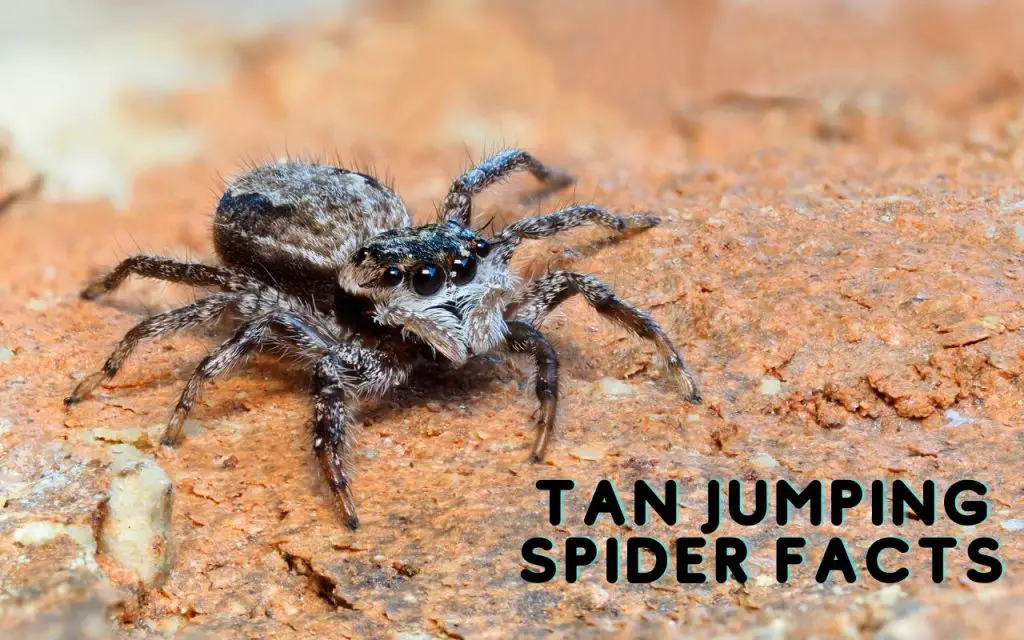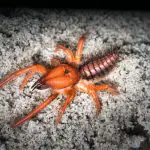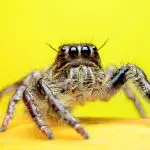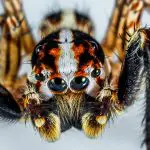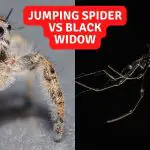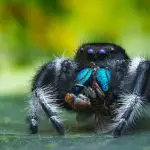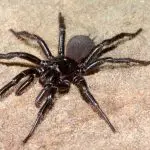Time to look at some Tan Jumping Spider facts. If you like curious, agile, and intelligent creatures – you certainly won’t be dissapointed by this little spider! Thanks to its outstanding features, you can easily distinguish a tan jumping spider from other species. They are tiny, furry creatures with enormous eyes at the front. The brilliant eyes around their heads set tan jumpers aside from other jumping spider species.
There are many features unique to this species that you can use in their identification. For example, their description, habitat, mating, diet and feeding habits.
Read all about the identification features and facts about tan jumping spiders in this article.
Description
The tan jumper is a small to medium-sized species of the jumping spider family. The female is approximately 10 to 13mm in length, whereas the male is around 9mm. It is hairy on the whole body, including the legs. It gets its name from the tan to yellowish-brown color of its body.
Moreover, it has decorating black stripes along its body. Its long, slender, and strong legs can jump longer distances than other species.
One unique feature is the enormous pair of eyes popping between the chelicerae and the set of eyes. In addition, it has a typically longer abdomen than all other jumping spiders.
Distribution
Tan jumping spiders are native to Central and North America. Their distribution stretches from the Eastern states of America to the adjacent Canada, Texas, and Wisconsin. You can also find these species in Mexico and Guatemala. They are common in gardens, fields, and dense woodlands.
When looking for a tan jumping spider in the woods, check around areas with tall grass, rocks, or logs and leaves from late summer to early fall. They love to shelter on vertical spots such as fence posts and tree trunks. They are well-distributed in regions with low temperatures and relatively low humidity of about 40 to 50%.
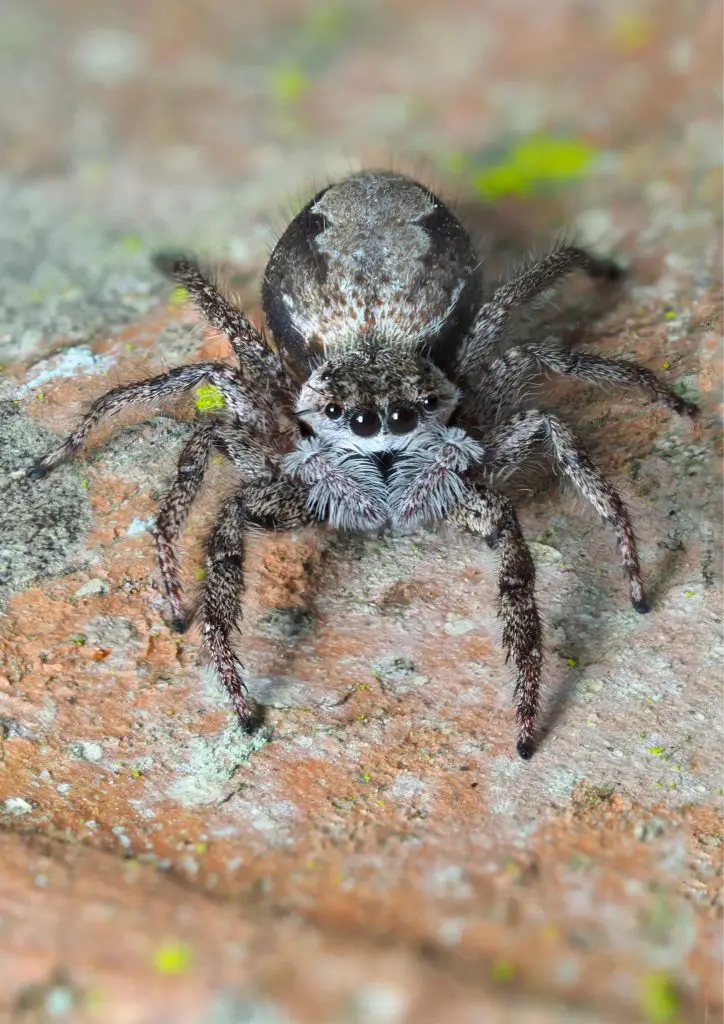
Habitat
Tan jumping spiders inhabit humid places and live best on vertical surfaces like tree barks. Sometimes you may miss it as it camouflages in brown, tan, and grey colors. It can also camouflage in white and black stripes or red patches to blend well with its background.
Sometimes you can spot these hiding in mashes waiting to pounce on their prey. You can find them on the ground under natural debris, leaf litter, or logs. Due to their adaptation to their natural habitats, they blend perfectly with their surroundings, like foliage and natural elements.
Diet and Hunting
Tan jumping spiders are predatory carnivorous creatures that feed on other smaller spiders, crickets, and insects. Interestingly, there is one report of this species eating an earthworm, something previously unseen in jumping spiders.
Generally, tan jumpers are among the few spider species that can eat anything their jaws can grab. Therefore, if you keep a tan jumper as a pet, provide a well-balanced diet.
In addition, tan jumpers are excellent day hunters due to their perfect eyesight. They use their enormous eyes to spot their prey at almost 360 degrees. Then, they create a silken trail attaching it to a solid object for support.
After that, the tan jumpers use the trail as support as they jump on their prey and inject venom that paralyzes their victim’s body. Even with its tiny size, a tan jumper can attack and kill prey much larger. They can also jump up to 10 times their body length.
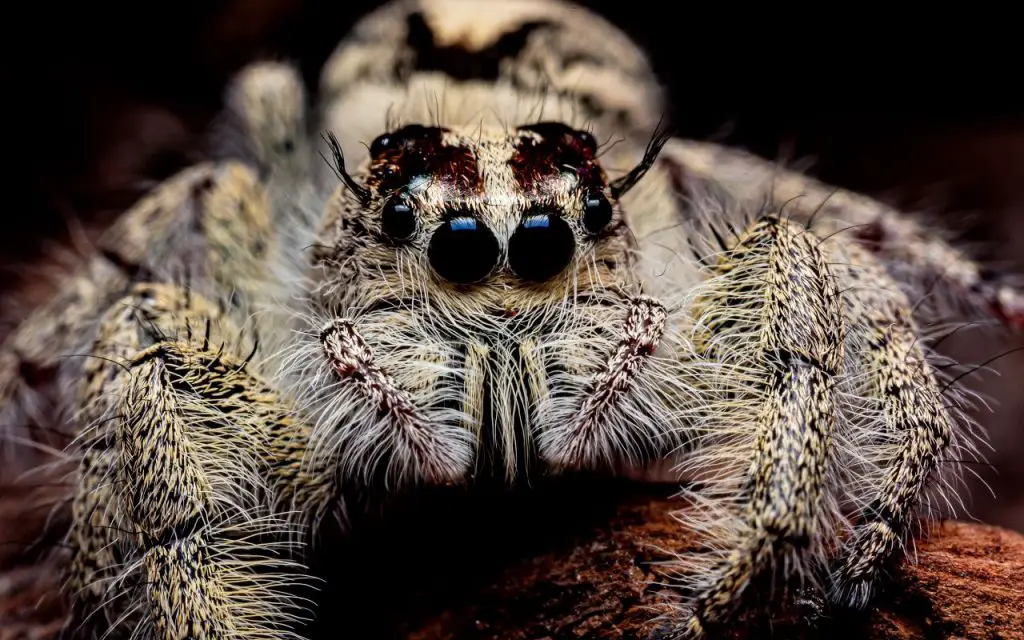
Size
A mature tan jumping spider can be about 6 to 13 mm in length. The slightly larger female can grow to about 0.39 to 0.51 inches, while the male only reaches 0.33 to 0.37 inches. Despite their tiny bodies, a tan jumper has powerful, long, slender legs to jump from high grounds and attack bigger prey.
Lifespan
A tan jumper has a short lifespan of one to two years. However, the females tend to live up to a year longer than the males. It has a four-stage life cycle consisting of the following stages:
- Egg
- Spiderling
- Juvenile
- Adult
Here is a simplified life cycle of a tan jumping spider.
| Stage | Description |
| Egg | The female creates a silk sac to deposit eggs under leaves, logs, or rocks. |
| Spiderling | The eggs hatch and spiderlings get active and, with time, disperse. It takes one to two weeks. |
| juvenile | Also called the “teen” stage, the spiderlings grow into juveniles within six to seven weeks. |
| Adult | The spiders mature in the final stage, developing distinct features, complete form, and color patterns. It takes up to eight weeks. |
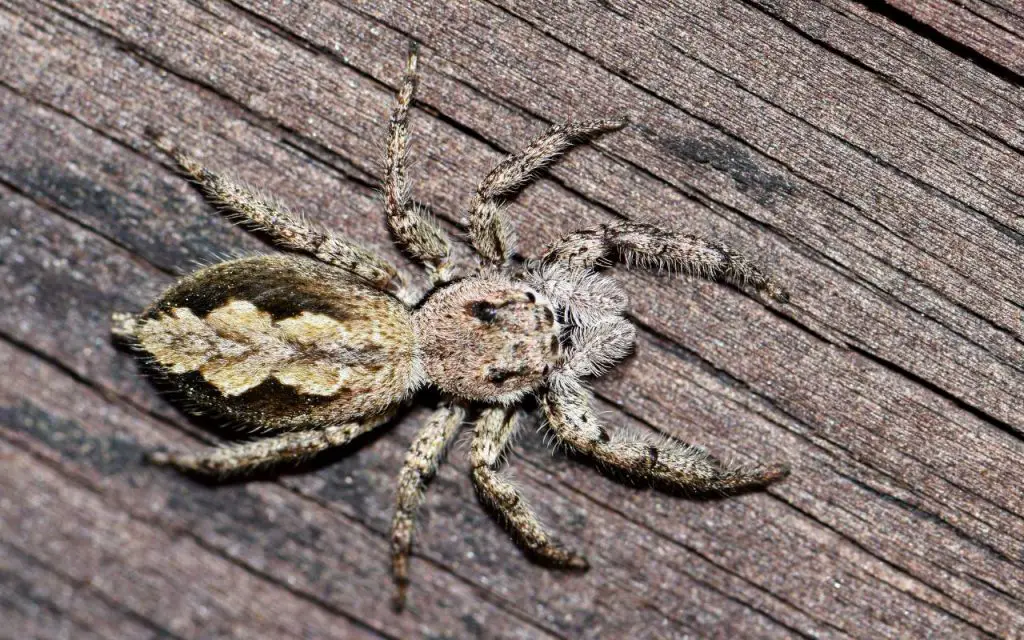
Differences between Male and Female
There are a few distinguishing features between a male and female tan jumping spider. Below are some differences.
- Epigyne – the tiny reproductive organ underneath a female tan jumping spider’s abdomen. It appears like a small black dot that is absent in males.
- Pedipalps – male tan jumpers have larger pedipalps than females. In addition to other purposes like grabbing, the males use these structures to deposit sperm inside the female epigyne.
- Chelicerae – many male tan jumpers have blue-green chelicerae, while the females have pink.
Venom
A tan jumping spider has venomous fangs, but the venom is not dangerous to humans. Again, they rarely bite except under threat. The venom only causes mild symptoms like redness, itching, and a slight swelling like a mosquito bite.
Tan Jumpers as Pets
A tan jumper is among the best jumping spiders you can keep as pets. It commands attention with its unique colors and stripes. Moreover, it is less selective in its diet as it can feed on more than a carnivorous diet. Therefore, this can be a rewarding pet if only you provide proper care. If you’d like to learn more, check out my Tan Jumping Spider Care Sheet.
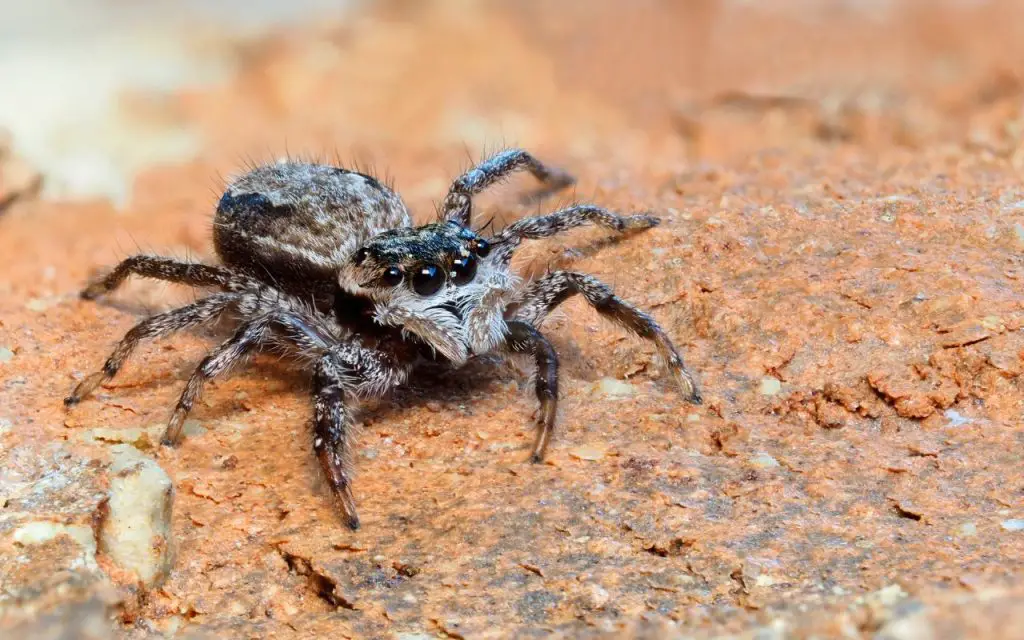
FAQ Related To Tan Jumping Spider facts
What Are Some Interesting Facts About The Tan Jumping Spider?
Below are some fun facts about a tan jumping spider.
- It has outstanding color combinations that enable it to blend with its background.
- It can jump longer distances than many other spider species due to its strong legs.
- Unlike many spiders, it can hunt and feed on larger prey than itself
- It is venomous but not dangerous to humans
Do Tan Jumping Spiders Bite?
A tan jumping spider rarely bites but can attack if threatened. However, its bite is mild and does not cause worse symptoms than a mosquito bite. While many people do not experience any symptoms, a few complain of itchiness, slight swelling, and redness.
Are Tan Jumping Spiders Safe?
Tan jumping spiders are safe and friendly to interact with, as they can only attack if you handle them roughly. However, their social nature towards humans is the opposite of their interaction with other spiders and insects.

